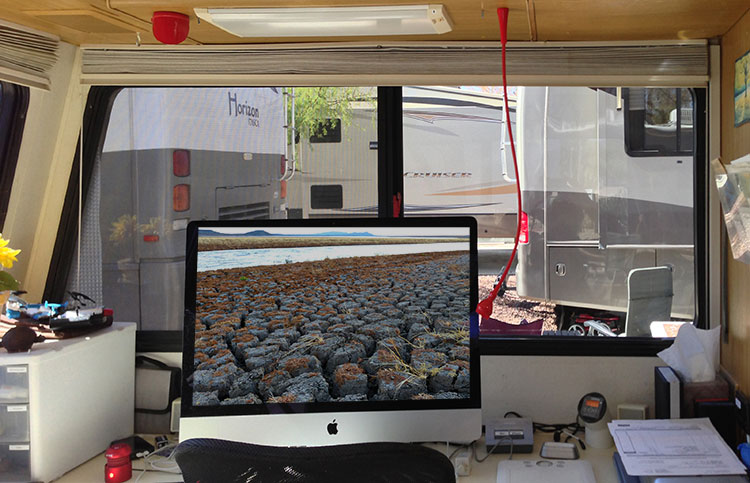
A bunch of birdsLately I seem to have been photographing birds, without really meaning to. I mean, I'm not a birder. I don't have a "life list." I can't even identify most birds, other than in broad categories: raptors, corvids (crow-like birds), waterfowl, and all the little nondescript "flitty birds," as my naturalist friend Jan calls them—wrens, sparrows and such. Like Hamlet, I know a hawk from a handsaw, but that's about it. I can spot a Studebaker Lark from half a mile away, but ask me to identify a real lark, and I'm at a loss. But hanging around with Jan, I just seem to end up photographing birds... probably because she's so good at spotting them. So I thought I might as well collect all the birds I've seen together in one page and talk about them. (All photos here were taken with my Panasonic FZ200, without whose 25-600mm f/2.8 lens many of these shots would have been impossible.) While staying in the Patagonia, Arizona area this winter, we visited the Paton House bird sanctuary. It was early afternoon—not the best time to photograph wildlife—but this Northern Cardinal was good enough to pose for me in open shade. I know this is a common "backyard bird," but I think it's one of the most beautiful. (Of course red is my favorite color, so that probably biases me a bit!) 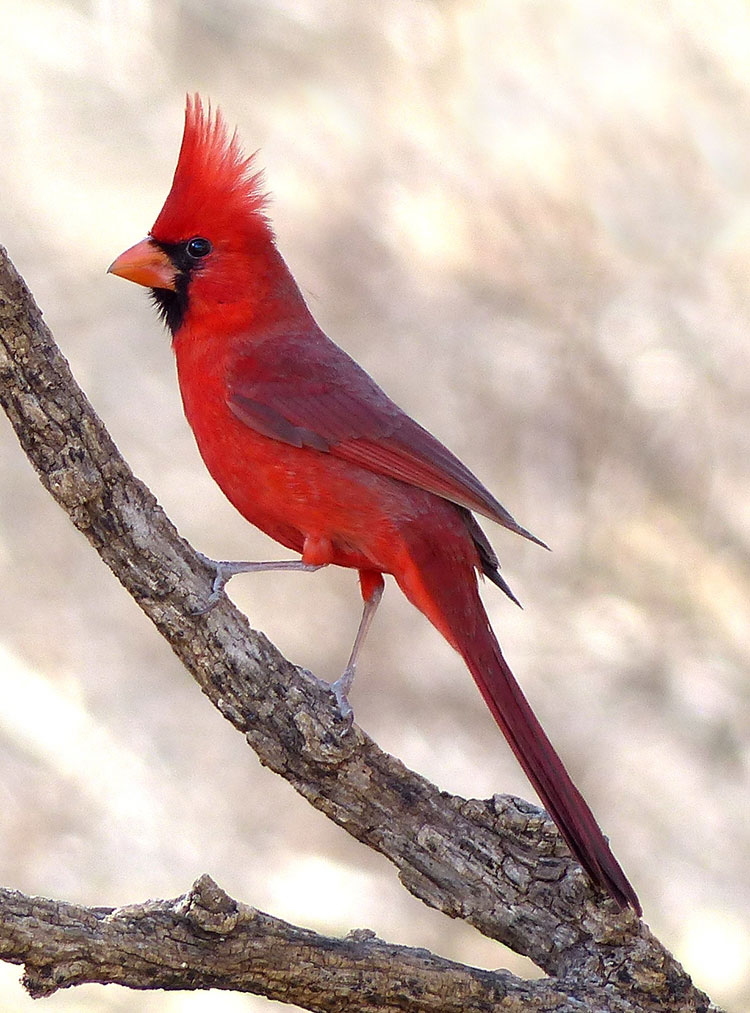
Cardinalis cardinalis
Adjacent to the Paton House is the Nature Conservancy's Patagonia-Sonoita Creek Preserve. We spent a morning walking there, hoping to see an Elegant Trogon. No trogons were to be found, but I did get a nice shot of this Yellow-Rumped Warbler. 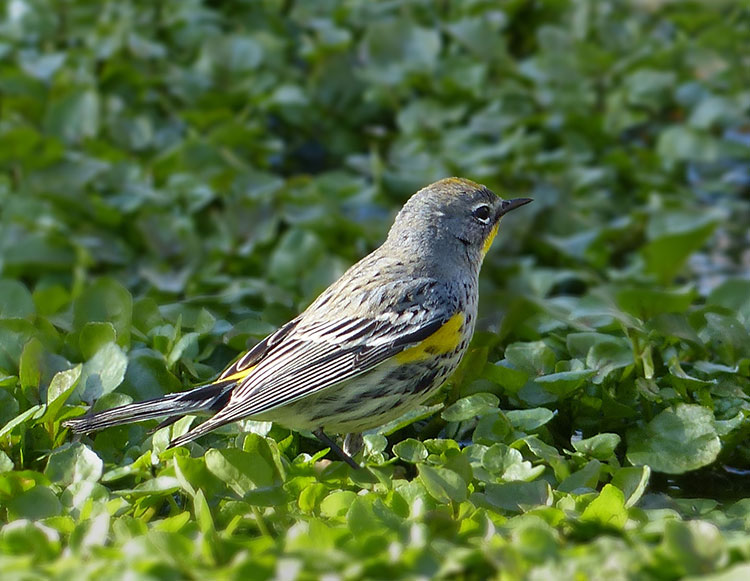
Setophaga coronata
In the southern Arizona town of Ajo, this Cactus Wren huddled against gusty winds that ruffled its feathers. 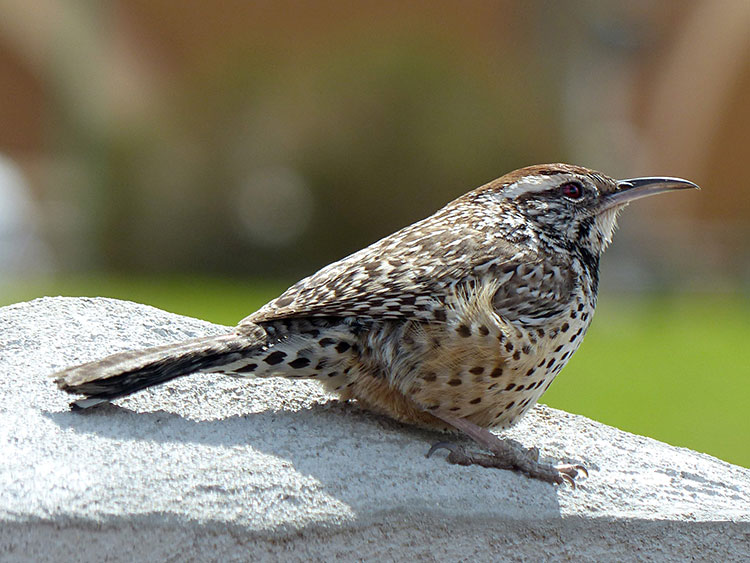
Campylorhynchus brunneicapillus
In a boondocking site near Arivaca Lake, Arizona, this spectacular Vermilion Flycatcher was hard to miss. Photographing it was another matter, as it kept flitting around from branch to branch. No sooner would I get my camera aimed than it would be gone, before I could press the shutter button. But the next morning as we were preparing to leave, it sat still long enough for me to capture it, shooting through the open cab window. My reference sources say that it "belongs to the Tyrannidae, or Tyrant Flycatcher family." It's hard to think of a bird that's just a few inches long as a tyrant. Of course, if I were a fly, I'd probably see things differently. 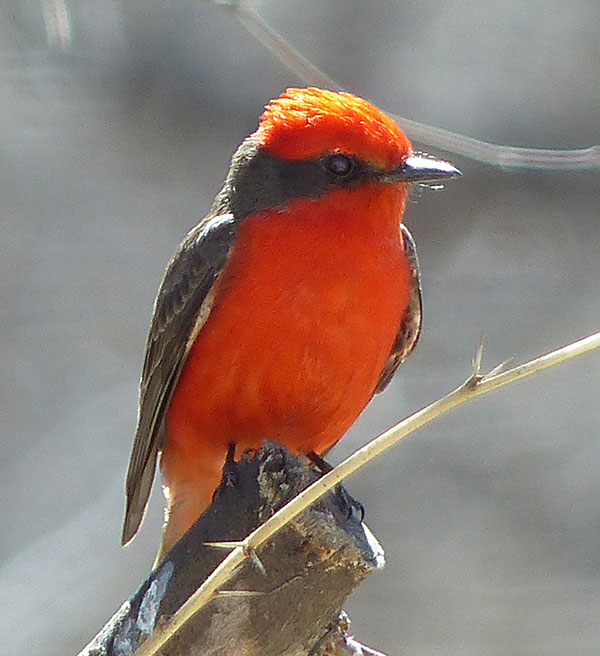
Pyrocephalus rubinus
Not everything that flies is a bird. One morning I heard a buzzing sound and looked up as this Light Sport aircraft flew over our campsite. (This particular model is a little too heavy to be classed as an Ultralight.) Boy, does that look like fun! Maybe someday... 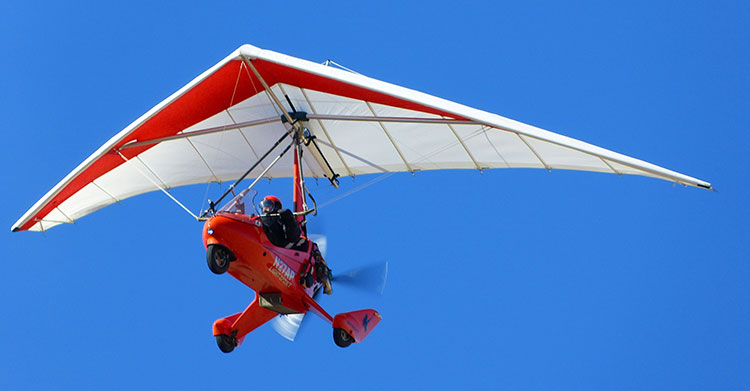
Light Sport aircraft
Our campsite in the Coronado National Forest was a familiar one: I had stayed there seven years ago, when I was still new to full-time RVing, with my late friend Bill Haas. It looked about the same, although there was more traffic on the nearby road than I remembered. 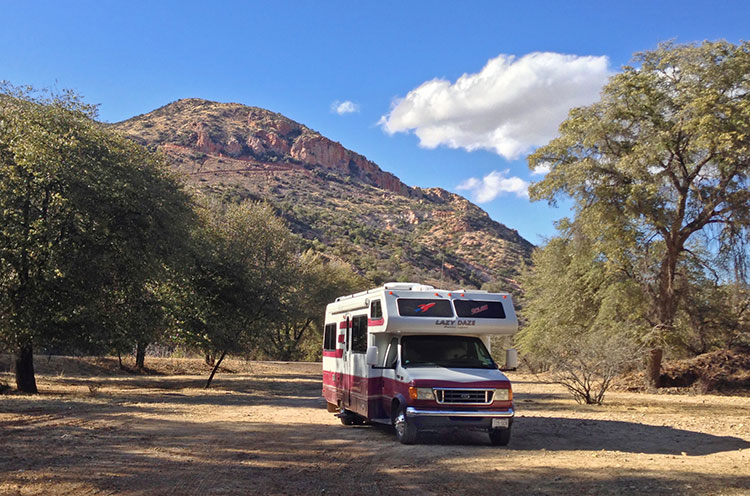
But the morning after I took that picture, we awoke to a blizzard of wet, heavy snow. It's been a long time since I've seen a real snowfall, so I enjoyed it. Snow is great, as long as you don't have to drive in it! About two inches piled up... but the following day dawned sunny, and soon it was all gone, except for a few white patches in shaded areas. 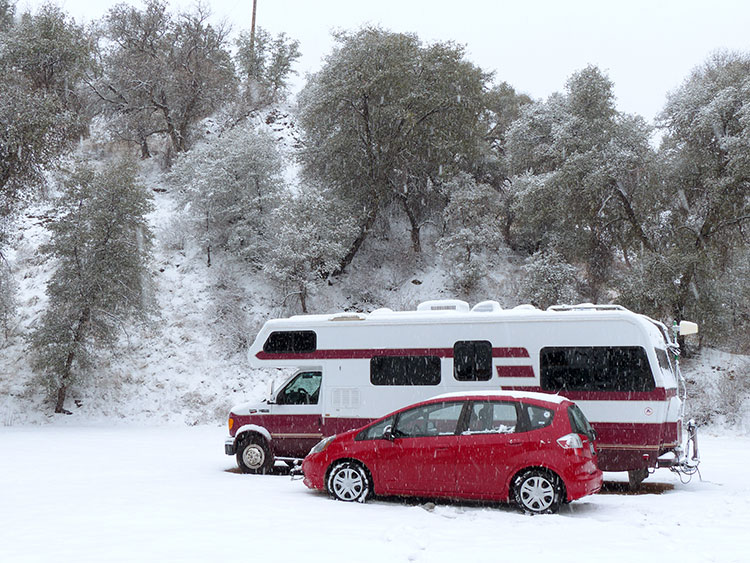
Even with snow, the view from my office window was a helluva lot better than it had been in the $48-a-night commercial campground where I'd spent a week while visiting friends in Tucson!
On the trail of the TrogonOne of our main reasons for being in Patagonia was that there had been sightings of the Elegant Trogon recently reported there. This spectacularly colored bird is one that Jan has been looking for for years. We had searched for it in the Nature Conservancy's Patagonia-Sonoita Preserve, in Fort Huachuca's Garden Canyon, and we spent several days walking the paths of Patagonia Lake State Park in hopes of sighting it. Our luck wasn't good. We met people who had seen it there "six times in six years," and people who had seen it "just up the trail, only about 15 minutes ago." One had even photographed it with her point-and-shoot camera. "He hung around for 25 minutes, and didn't seem to mind us at all. He was only a few feet away," she said. Another woman was kind enough to lead us to the exact place were she'd seen it the day before. But needless to say, the bird wasn't there. After hiking miles of the park's trails while lugging Jan's heavy equipment, we still hadn't seen a trogon. We kept asking people if they'd seen it, and usually the answer was yes. "He's a real show-off—he'll come right up to you," they said. Everybody was seeing the bird except us! Then just at twilight as we were walking back toward the park's entrance, discouraged and ready to give up, one of the folks we had asked about the trogon earlier came hustling back up the trail to tell us that he and his wife had found the bird, and he offered to take us to where it was. A fast five-minute trot brought us to where his wife was standing. When she saw us coming, she waved her arms wildly... and the bird flew away. We figured we'd missed it yet again. But then I saw a flash of brilliant red about a hundred feet ahead of us—the bird was still in the area! Jan and the husband crept up the trail until she could see it, while I waited behind, not wanting to spook him again. Five minutes went by while I chatted with the wife. Then my phone rang. It was Jan. "We've got the bird," she said. "Come on up." I followed the trail for a few hundred feet until I caught up with Jan, but I still couldn't see the bird. We stood there for five minutes while she and the husband took turns telling us where he was, yet all I could see was the thicket of cottonwoods that fills that whole area. At last he came out into the open. Yes, that brilliant coloration was hard to miss! Jan and I started shooting. He was far enough away that I had my lens racked out all the way (I was grateful that Jan had reminded me to bring my new lightweight monopod!), and the post-sunset lighting was diffuse (which is good for bird photography), but not bright. The bird was screened by twigs, making it hard to get an accurate focus. I was shooting at f/2.8 with a 600mm lens at 1/50 of a second—way slower than I'd've liked—and even with my monopod and the camera's image stabilization, it was tough to get a sharp image. But I got a few decent ones that at least show what the bird looked like. Pretty much any color you can name, this bird had! 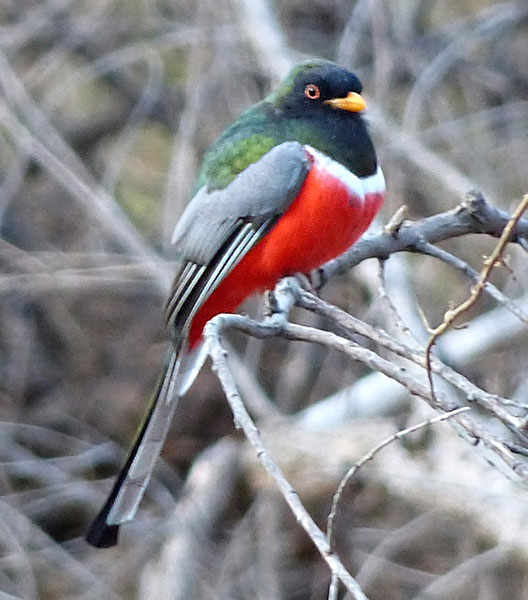
Trogon elegans
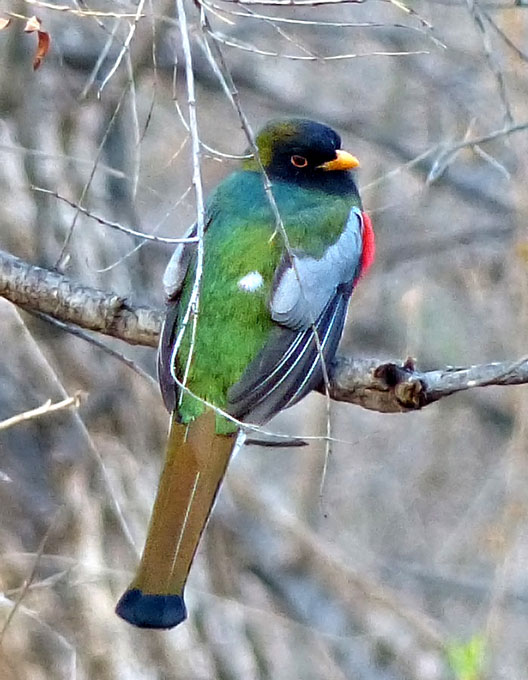
Trogon elegans
We drove home in a state of bliss, our quest completed. Bosque del ApacheLate last fall, Jan and I took a ride to the Bosque del Apache wildlife refuge. Its ponds and fields are home to thousands of waterfowl: snow geese, herons, ducks, coots, you name it. 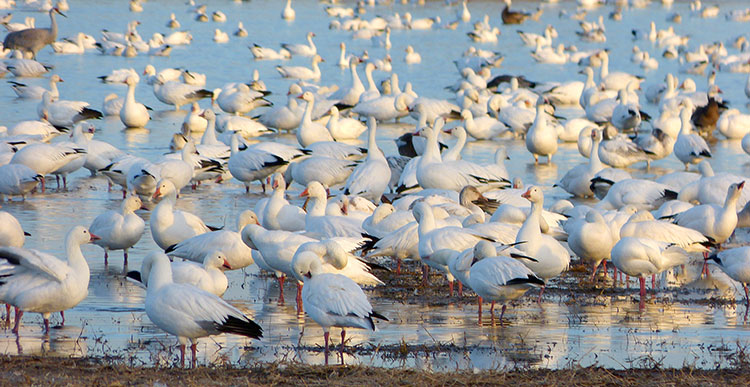
While driving through the refuge, we spotted this stately Great Blue Heron. 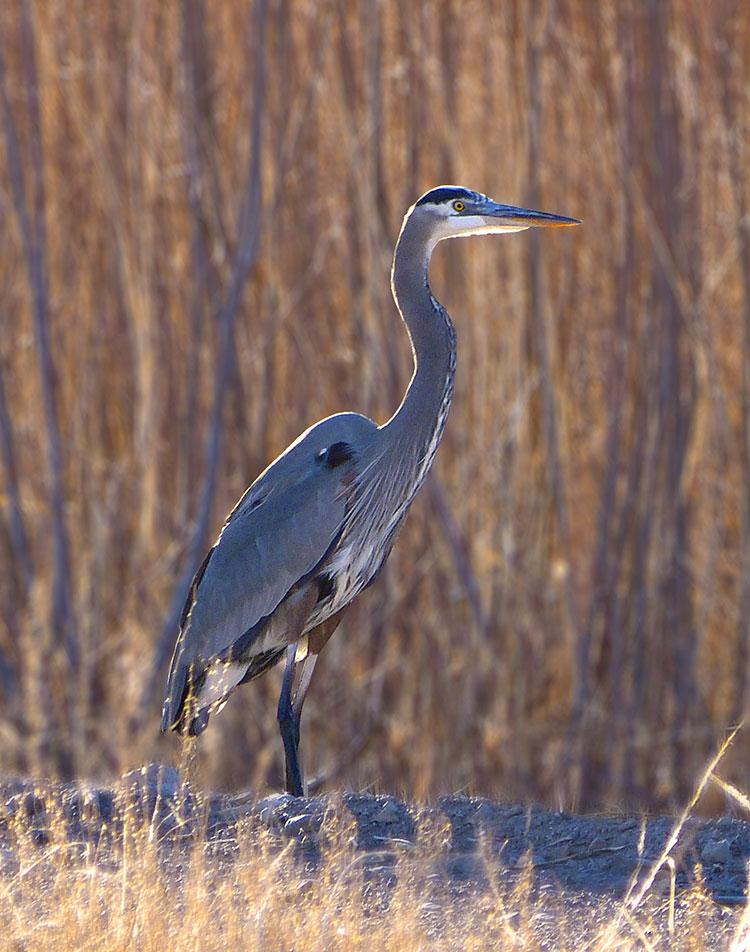
Ardea herodias
Quick quiz: how many birds have teeth? I discovered that the Northern Shoveler, a kind of duck, is one of the very few that do. Well, sort of. More than a hundred toothlike projections on its broad bill help it to strain food from water, much as a baleen whale strains food from the sea. If this female Shoveler looks as though she's drooling, she isn't—she's feeding. 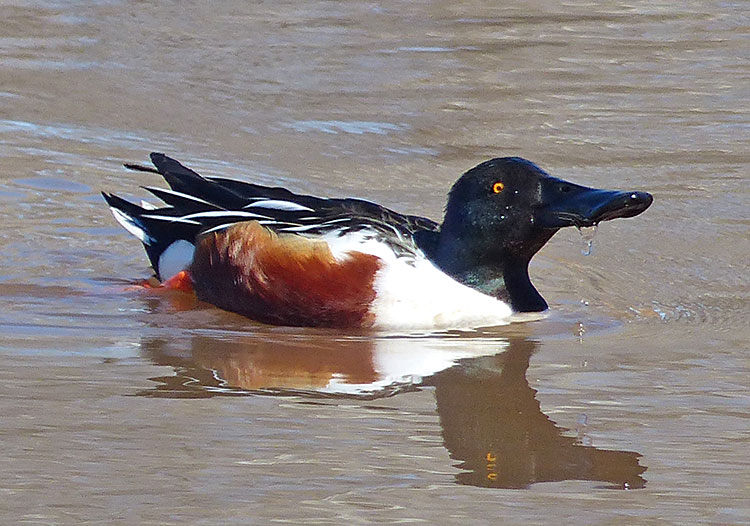
Anas clypeata

I can't help thinking that the Shoveler must have been the model for Daffy Duck. I mean, look at the shape of that bill. It's a perfect match, except for the color. And Daffy even has teeth... there's gotta be a connection! Speaking of waterfowl, another dabbler is the Coot, shown here in a somewhat undignified position: diving for food on the bottom of the pond. Bottoms up! 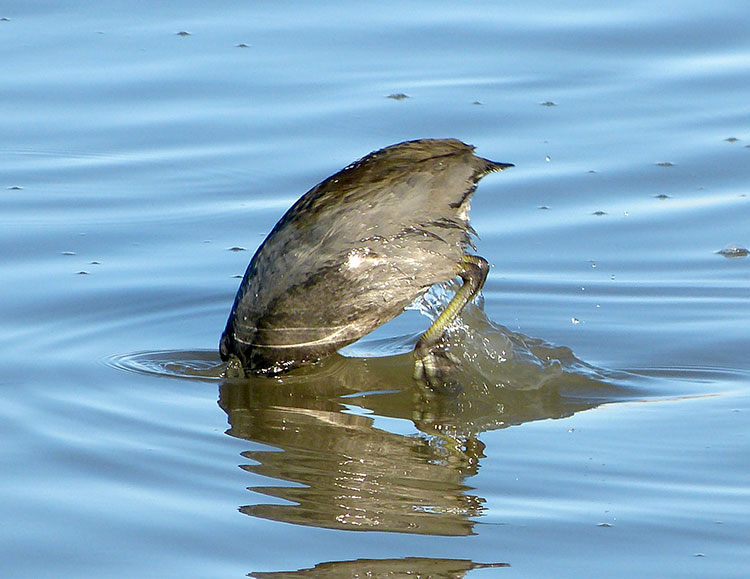
Fulica americana
Of course the most interesting thing about birds is that they fly.Some flit, some swoop, some soar... it's always a treat to see how completely they've mastered the air. Watching birds land always brings back my days as a student pilot. I can almost hear the instructor's voice... "Gear down, flaps fully extended, on final approach..." 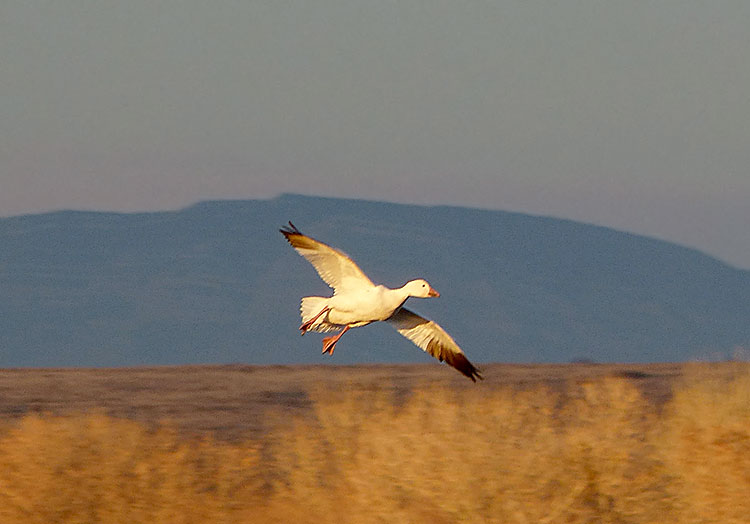
Chen caerulescens
"...now flare out, let it mush in, and steer with the brakes." 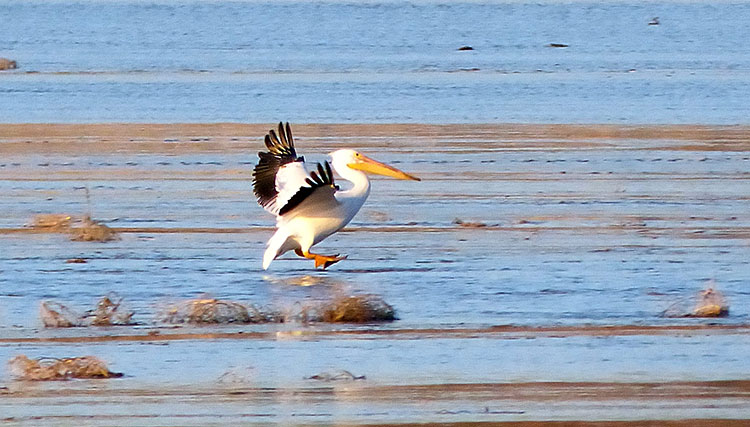
Pelecanus erythrorhynchos
My favorite birds are the ones that soar—not surprising, since I trained in sailplanes. These turkey vultures were roosting in the tops of very tall cypress trees at Morro Bay State Park on the California coast. Periodically they'd take off and circle for awhile, looking for prey. Some people react to the word "vulture" with disgust, but I don't care if they have bald red heads and feed on carrion—they soar so gracefully that they're a joy to watch. And hey, what's wrong with carrion? Wouldn't you rather have them eat dead mice than carry off the yappy little toy poodles and Chihuahuas that infest RV parks? On second thought, don't answer that. 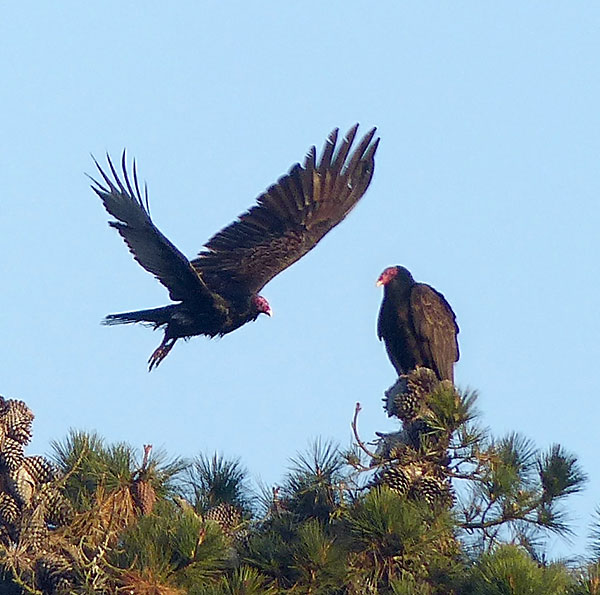
Cathartes aura
Back in the desertDriving the Ajo Mountain loop at Organ Pipe National Monument, I spotted this Harris's Hawk perched on a giant saguaro. 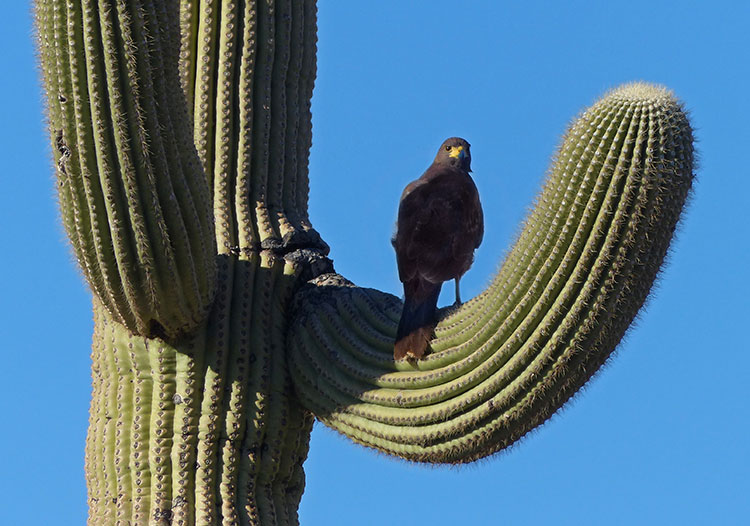
Parabuteo unicinctus
How do they do that without puncturing their toes? Beats me. Here's a closer look: 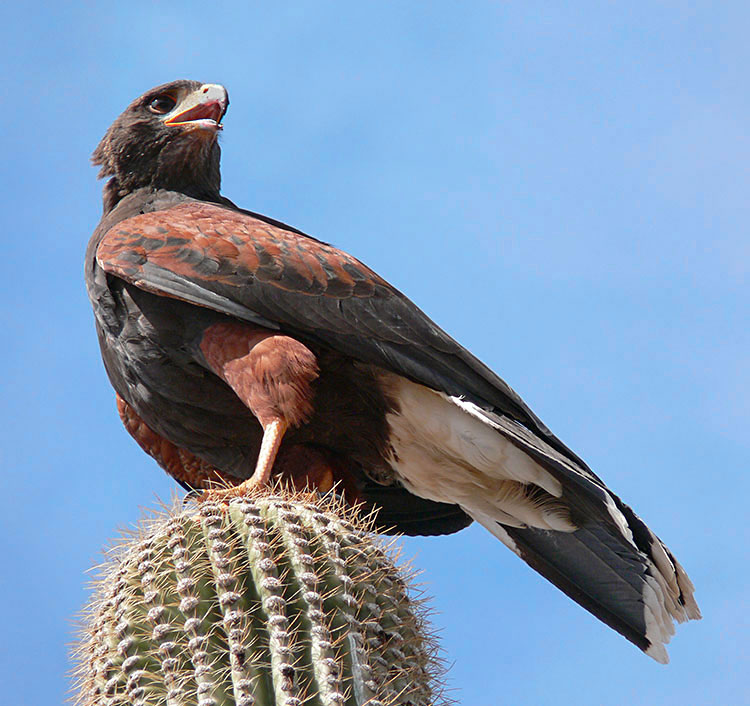
Parabuteo unicinctus
This next fellow isn't a bird, but he certainly is flying! I was with friends in southern Arizona when we had to stop for a troop of javelinas ambling lazily across the road. As we waited, an impatient driver pulled around us, and the javelinas sprinted for cover. Because I often leave my camera in 12 frame per second burst mode, I was able to lean out the window and fire off a fast series. This midair leap was my favorite. 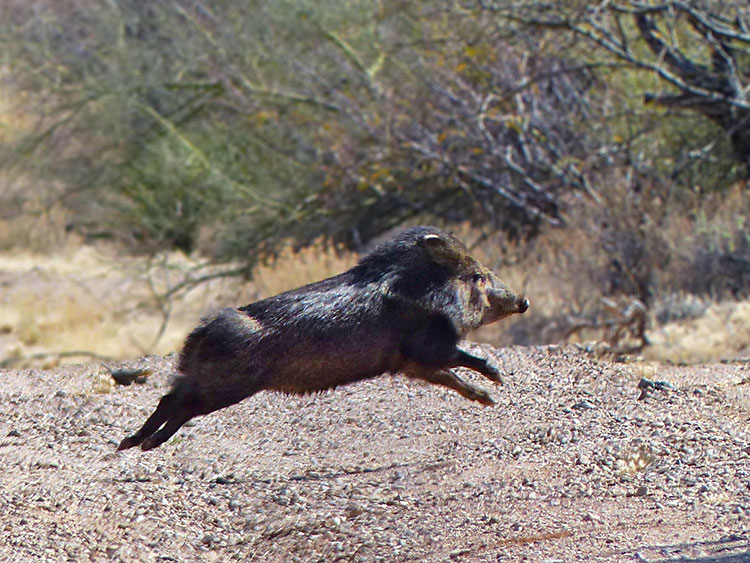
Pecari tajacu
PostscriptIf I'm such an ignoramus about birds (and I am), then how did I identify all these birds? Well, some of them Jan told me about. But I identified others, and got all their scientific names and habits, from the iBird West Guide to Birds iOS app. I'm not going to try to tell you all its features; you can read about them in the App Store. I'll just say this: there are a lot of bird apps out there, and I've tried a number of them, including Peterson's and Audubon's. This one is my favorite. It's comprehensive (830 species, and not just western ones!), easy to navigate, and has everything I can imagine wanting. $6.99 and worth every penny. Android users: it appears that the current versions of the iBird apps are only available for Apple's iPhone/iPod/iPad devices, but older 2011-vintage Android versions of several iBird apps can still be had. Unfortunately, iBird West isn't one of them—the closest you can get is iBird Pro version 3. (The current iOS version is 6.1.) |

© 2013 by Andy Baird. For an index of my other websites, see the andybaird.com homepage.


